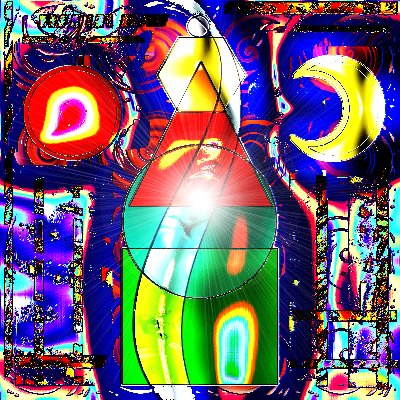introduction jnani raja hatha tantric kundalini laya mantra karma bhakti sufism vajrayana zen taoist
Hatha Yoga

Hatha literally means force, strength or will. It also means sun-moon, "ha" being the syllable for the sun and "tha" being the syllable for the moon. The sense of this latter meaning is that the "goal" of Yoga is facilitated by cleansing the two main channels of the subtle body, the cool, lunar Ida on the left of the spine and the hot, solar Pingala at the right, so that there is a proper flow of Prana or fundamental life-energy. In the gross (physical) body "ha" corresponds to the warm digestive "air" (vayu) known as "apana" which governs the lower part of the abdomen and the cool, respiratory luna vayu, "prana", (NB small "p" this time) which governs the upper body. The practice of Hatha Yoga is meant to harmonise these two energies. The esoteric aspect of all this is that the alchemical coincidentia oppositorium or conjunction of opposites, in this instance symbolised by the sun and the moon as they manifest in the microcosm of the human body, is aimed for.
Hatha Yoga, in accord with the other meaning of the term, may be taken as a project of perfecting the will by eventually controlling all aspects of the psycho-physical complex: hence elaborate and difficult postures and highly technical and difficult pranayamas. The problem with this approach is that there is no answer to the question of who or what controls the will when the will is ultimately perfected. The desideratum of having everything controlled cannot be met.
Traditionally, Hatha Yoga is regarded as a preparation for Raja Yoga. Alain Danielou goes so far as to say that it is "essential for further development". ("For the sake of Raja Yoga alone is Hatha Yoga taught" Hatha Yoga Pradipika.) Many of its techniques are thought to arouse the Kundalini, so there is considerable overlap between Hatha and Kundalini Yogas and a single model of the human being and his/her relationship to the universe serves both.
Similar ideas and practices are found in Chinese and Japanese martial arts in which a physical discipline relates to an overall religious philosophy, a model of the human being, a contemplative practice and a concept of universal energy. These martial arts have their roots in Zen and Taoism
Modern Western Hatha Yoga tends to focus on performance of asanas (postures) and to a lesser extent on pranayama (breath discipline). The term tends to be used to distinguish a roughly traditional generic approach from the trade-marked varieties such as Iyengar, Bikram, Swaroopa etc.
Key Hatha Texts are Goraksha Samhita, Siva Samhita, Hatha Yoga Pradipika.
Resources
Translation of The Hatha Yoga Pradipika
introduction jnani raja hatha tantric kundalini laya mantra karma bhakti sufism vajrayana zen taoist

